Potřebujeme váš souhlas k využití jednotlivých dat, aby se vám mimo jiné mohly ukazovat informace týkající se vašich zájmů. Souhlas udělíte kliknutím na tlačítko „OK“.
ASTM D7249/D7249M-12e1
Standard Test Method for Facing Properties of Sandwich Constructions by Long Beam Flexure (Includes all amendments And changes 7/14/2016).
Automaticky přeložený název:
Standardní zkušební metoda pro Tváří v tvář vlastnosti sendvičových konstrukcí Long Beam ohyb
NORMA vydána dne 1.8.2012
Informace o normě:
Označení normy: ASTM D7249/D7249M-12e1
Poznámka: NEPLATNÁ
Datum vydání normy: 1.8.2012
Kód zboží: NS-37988
Počet stran: 9
Přibližná hmotnost: 27 g (0.06 liber)
Země: Americká technická norma
Kategorie: Technické normy ASTM
Kategorie - podobné normy:
Anotace textu normy ASTM D7249/D7249M-12e1 :
Keywords:
bending stress, facing modulus, facing stress, facing strength, flexural stiffness, sandwich construction, sandwich deflection, ICS Number Code 79.060.01 (Wood-based panels in general)
Doplňující informace
| Significance and Use | ||||||||||||||||||||
|
5.1 Flexure tests on flat sandwich construction may be conducted to determine the sandwich flexural stiffness, the core shear strength, and shear modulus, or the facings’ compressive and tensile strengths. Tests to evaluate core shear strength may also be used to evaluate core-to-facing bonds. 5.2 This test method is limited to obtaining the strength and stiffness of the sandwich panel facings, and to obtaining load-deflection data for use in calculating sandwich beam flexural and shear stiffness using Standard Practice D7250/D7250M. Due to the curvature of the flexural test specimen when loaded, facesheet compression strength from this test may not be equivalent to the facesheet compression strength of sandwich structures subjected to pure edgewise (in-plane) compression. 5.3 Core shear strength and shear modulus are best determined in accordance with Test Method C273 provided bare core material is available. Test Method C393 may also be used to determine core shear strength. Standard Practice D7250/D7250M may be used to calculate the flexural and shear stiffness of sandwich beams. 5.4 This test method can be used to produce facing strength data for structural design allowables, material specifications, and research and development applications; it may also be used as a quality control test for bonded sandwich panels. 5.5 Factors that influence the facing strength and shall therefore be reported include the following: facing material, core material, adhesive material, methods of material fabrication, facing stacking sequence and overall thickness, core geometry (cell size), core density, adhesive thickness, specimen geometry, specimen preparation, specimen conditioning, environment of testing, specimen alignment, loading procedure, speed of testing, facing void content, adhesive void content, and facing volume percent reinforcement. Further, facing strength may be different between precured/bonded and co-cured facesheets of the same material. 1.1 This test method covers
determination of facing properties of flat sandwich constructions
subjected to flexure in such a manner that the applied moments
produce curvature of the sandwich facing planes and result in
compressive and tensile forces in the facings. Permissible core
material forms include those with continuous bonding surfaces (such
as balsa wood and foams) as well as those with discontinuous
bonding surfaces (such as honeycomb).
1.2 The values stated in either SI units or inch-pound units are to be regarded separately as standard. The values stated in each system may not be exact equivalents; therefore, each system shall be used independently of the other. Combining values from the two systems may result in non-conformance with the standard. 1.2.1 Within the text, the inch-pound units are shown in brackets. 1.3 This standard does not purport to address all of the safety concerns, if any, associated with its use. It is the responsibility of the user of this standard to establish appropriate safety and health practices and determine the applicability of regulatory limitations prior to use.
|
|
Standard Test Method for Flexural Properties of Sandwich Constructions
|
|
Standard Terminology for Composite Materials
|
|
Standard Test Method for Moisture Absorption Properties and Equilibrium Conditioning of Polymer Matrix Composite Materials
|
|
Standard Test Method for Compressive Properties of Unidirectional Polymer Matrix Composite Materials Using a Sandwich Beam
|
|
Standard Terminology Relating to Quality and Statistics (Includes all amendments and changes 4/21/2022).
|
|
Standard Terminology Relating to Methods of Mechanical Testing (Includes all amendments and changes 3/29/2023).
|
|
Standard Practice for Calculating Sample Size to Estimate, With Specified Precision, the Average for a Characteristic of a Lot or Process
|
|
Standard Practice for Use of the Terms Precision and Bias in ASTM Test Methods
|
|
Standard Test Methods for Performance Characteristics of Metallic Bonded Resistance Strain Gages (Includes all amendments and changes 8/7/2020).
|
|
Standard Practice for Determining Sandwich Beam Flexural and Shear Stiffness |
Podobné normy:
Historická
1.11.2012
Historická
15.11.2007
Historická
1.4.2013
Historická
1.5.2010
Historická
1.5.2014
Historická
1.6.2008
Doporučujeme:
EviZak - všechny zákony včetně jejich evidence na jednom místě
Poskytování aktuálních informací o legislativních předpisech vyhlášených ve Sbírce zákonů od roku 1945.
Aktualizace 2x v měsíci !
Chcete vědět více informací? Podívejte se na tuto stránku.


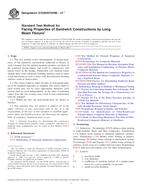
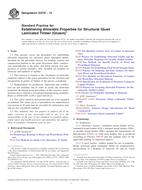 ASTM D3737-12
ASTM D3737-12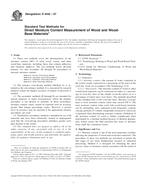 ASTM D4442-07
ASTM D4442-07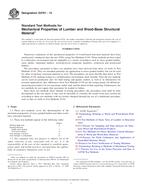 ASTM D4761-13
ASTM D4761-13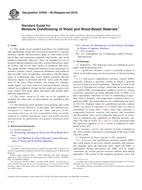 ASTM D4933-99(2010)..
ASTM D4933-99(2010).. ASTM D5456-14a
ASTM D5456-14a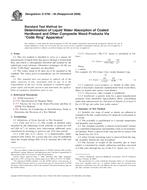 ASTM D5795-95(2008)..
ASTM D5795-95(2008)..
 Cookies
Cookies
